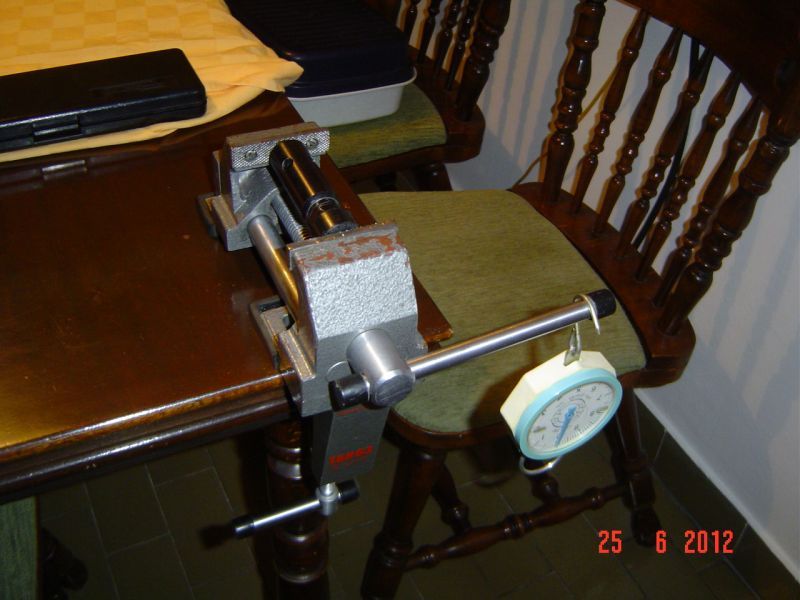Another way to look at hydraulic damping is to consider the pressures required. To decelerate the piston the hydralic force needs to be greater then the pnumatic force driving the piston. As the hydralic force is applied to the piston cross section less the shaft cross section this gives the required pressure.
Assuming a gun pressure of 20 bar gives a driving force of 265N given the 13mm dia of the piston. As the hydralic force acts on an area proportional to 13mm^2-8mm^2 a minimal pressure of 32.2bar is required to slow the piston.
Once the shaft seperates the minimal braking pressure drops back to 20 bar as it is seen across the entire piston area.
The pressure drop through a constriction can be estimated by
dP= 1/2*k*density*velocity^2
Where k is a pressure loss coeficient.
This returns the presure in pascals when using si units /100000 to convert to bar.
With the velocity know you can calculate the required port area/clearances.
The difficulty in this approach is finding a value for k as this will be a function of piston position.
I'll have a dig around to see if I can find an approximation to give a ball park figure.
Sam
Assuming a gun pressure of 20 bar gives a driving force of 265N given the 13mm dia of the piston. As the hydralic force acts on an area proportional to 13mm^2-8mm^2 a minimal pressure of 32.2bar is required to slow the piston.
Once the shaft seperates the minimal braking pressure drops back to 20 bar as it is seen across the entire piston area.
The pressure drop through a constriction can be estimated by
dP= 1/2*k*density*velocity^2
Where k is a pressure loss coeficient.
This returns the presure in pascals when using si units /100000 to convert to bar.
With the velocity know you can calculate the required port area/clearances.
The difficulty in this approach is finding a value for k as this will be a function of piston position.
I'll have a dig around to see if I can find an approximation to give a ball park figure.
Sam





